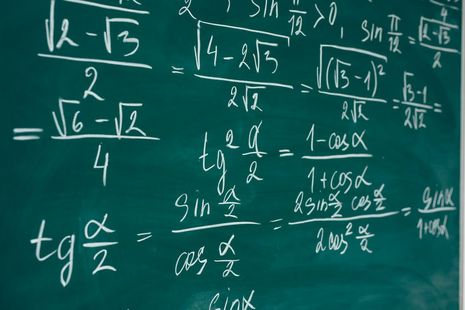Science’s Forgotten Women: Émilie du Châtelet
Lidija Beric delves into the life and work of this fascinating philosopher and mathematician, whose valuable contributions to science often remain hidden.

“So, who’s heard of Isaac Newton?”
It’s quite probable that even those without a specialist knowledge of physics could answer with something like “the guy who discovered gravity, right?”
If, however, the question was, “who’s heard of Émilie du Châtelet?”, it’s likely that only a small minority could respond with anything more than “no”, and I’d be astonished if anyone were to say: “the woman who took gravity and made it modern physics, right?”
Starting from Newton’s explanation of why objects on Earth don’t fall upwards, Émilie du Châtelet developed foundational concepts that remain at the heart of physics today. It was only by combining the ideas of these two brilliant thinkers that the mystery of planetary movement, central to the Enlightenment debates of the 18th century, could be solved. Newton was indeed the first to suggest the idea of gravity, which he extrapolated to be a universal force that governed the wonderfully ordered movements of the planets from watching apples fall. Whilst this idea prevailed in England, a large majority on the continent continued to instead support Descartes’ theory, which posited that the planets’ circular motion was caused by the swirling of celestial particles, a tornado-esque cosmic aether. This is where Émilie du Châtelet enters the scene. Her own genius allowed her to instantly recognise the superiority of Newton’s Theory of Universal Gravitation because of its predictive quality, prompting her to champion the idea against a heavy tide of predominantly male Cartesian partisans throughout Europe.
“Open-minded and fearless, du Châtelet broke with tradition by daring to express gravitational theory using calculus, precisely what Newton had deemed too subversive.”
Du Châtelet was a brilliant linguist, mathematician, and writer and a radically modern thinker for her time. In an era when women could not even receive a formal education at school, let alone at university, she committed herself to a programme of self-learning and wrote in a passionate advocation for the rights of women: “If I were king, I would reform an abuse which effectively cuts back half of humanity. I would have women participate in all human rights, and above all, those of the mind.” Almost two hundred years before Einstein, she theorised that neither light nor heat had any mass, based on a beautifully simple thought experiment. If light had even the tiniest mass, because of its colossal speed, it would have huge momentum, and yet it is self-evident that the sun does not fire cannonballs into our eyes. She further hypothesised that different colours of light would have different “energies”, intuitions which led to the discovery of infrared waves. Her ideas were a bold challenge to the then predominant “phlogiston” theory of heat. She entered an essay based on these arguments to the Paris Académie des Sciences, daring to publicly disagree with the age’s most famous male thinkers, including Newton and her lover, Voltaire. Her boldness was rewarded; she became the first woman to publish a scientific paper in the Académie’s prestigious journal.
Du Châtelet, in fact, worked with Voltaire on her quest to communicate and advance Newton’s ideas on gravity. Now, this French playwright and Enlightenment thinker could certainly ironise the fact that critics were able to passionately denounce Newton’s theory as smacking of some alchemical pseudo-science whilst themselves swearing by the existence of a magic vortex in the sky. However, he relied on Émilie to perform the complex mathematical equations that would indeed prove Newton’s theory was based on the scientific method, and not fuelled by the wisps of whimsy and imagination.
“It makes me think of the adverse effect our own culture may be having on the numbers of women in STEM by...arbitrarily codifying arts as female and science as male.”
Although Newton had invented calculus, he chose to couch the derivation and expression of gravity in Principia in the conventional language of geometry. Unaware of Newton’s unpublished calculus, Émilie made an inspirational fusion of Gottfried Wilhelm Leibniz’s new and independently invented calculus and Newton’s geometric Universal Gravitation. Her magnum opus, Institutions de Physique, marked her first synthesis of their ideas, cutting through the noise of the dogmatists, including Voltaire, who stood by either Newton or Leibniz. Open-minded and fearless, she then broke with tradition by daring to express gravitational theory using calculus, precisely what Newton had deemed too subversive. She did so using Leibniz’s superior dy/dx notation, a painstaking yet radically forward-thinking task. The theory of gravity centres on dynamics and change, making calculus the ideal medium for its expression – which she appreciated.
The result was that Émilie effectively performed a scientific and linguistic translation of Newton’s 500-page Principia: the Latin was summarised into elegant and accessible French prose, and the geometry recast into Leibniz’ calculus. Yet her crowning achievement was what she added to Newton’s Laws: she exposed energy and momentum as separate concepts and suggested the conservation laws they obey. By plotting the depth of penetration into clay against the speed at which balls of the same size were fired into the clay, she demonstrated by experiment that energy was proportional to mv2, not mv, as Newton had believed. All this, in the mere “Appendix” to her translation of Principia. As if that were not remarkable enough, she finished this translation and reworking just a few days before her death in childbirth, which she had anticipated. This made her all the more determined to finish her translation before the birth, even soaking her hands in icy water so she could stay awake to work well into the night (not included as a tip for surviving a Cambridge all-nighter…!).
As a linguist who thoroughly enjoyed her maths A-Level, what particularly inspires me about Émilie du Châtelet is the notion that it is possible to be both “sciencey” and “artsy”. She learned to speak six languages, and it was this synthesis of her skill with languages, literature, and mathematics that enabled her elegant illumination of Newton’s ideas and her pioneering calculus rewrites of his proofs. It makes me think of the adverse effect our own culture may be having on the numbers of women in STEM by not only insisting on such a strong divide between the “arts” and the “sciences” but going further in arbitrarily codifying arts as female and science as male.
Émilie was an admirable woman, who should be remembered as a role model for women in science, a revolutionary figure who stood up to her male predecessors and contemporaries by daring to think for herself, not as a woman, but as a scientist. As it currently stands, though, if anyone has heard of her, it is most often as “Voltaire’s mistress”.
Hmm… how about remembering Voltaire as Du Château’s “toyboy”, and Du Château as “the woman who kick-started modern physics by her inspired use of calculus”?
 News / News in Brief: Postgrad accom, prestigious prizes, and public support for policies11 January 2026
News / News in Brief: Postgrad accom, prestigious prizes, and public support for policies11 January 2026 Comment / Will the town and gown divide ever truly be resolved?12 January 2026
Comment / Will the town and gown divide ever truly be resolved?12 January 2026 Comment / Plastic pubs: the problem with Cambridge alehouses 5 January 2026
Comment / Plastic pubs: the problem with Cambridge alehouses 5 January 2026 Lifestyle / The only party girl in the East Midlands12 January 2026
Lifestyle / The only party girl in the East Midlands12 January 2026 News / 20 vet organisations sign letter backing Cam vet course13 January 2026
News / 20 vet organisations sign letter backing Cam vet course13 January 2026









